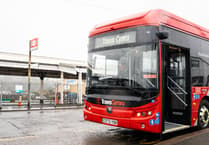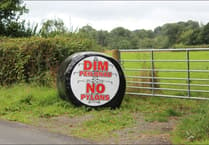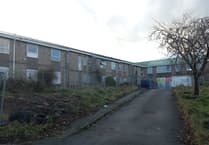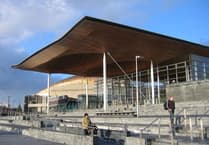One of my earliest memories is being lifted out of the bath to stand on the window sill and watch a steam train puffing up the Ystwyth valley, on the old Aberystwyth to Carmarthen line. It was probably Christmas 1963. The line was washed away just east of Llanilar in a storm in the spring of 1964 and never repaired.
So 61 years ago, one of the two rail links into Ceredigion was cut, and since then whilst there have been some road improvements (bypasses at Llandysul, Newbridge and Newtown) fundamentally the road infrastructure hasn’t changed. From a physical communications point of view, Ceredigion has been left behind for the best part of two generations. And in truth, I suspect that quite a lot of people weren’t too unhappy with that situation.
Agriculture, tourism and public sector jobs brought sufficient money in to support services, construction and supply jobs. They may not have been brilliantly paid, but equally house prices were cheap and people could get by. In summer there would be a tourist influx to the coastal resorts, but much of Ceredigion remained truly “Welsh Wales”, and rightly proud of that. It was good for the Welsh language, culture and intergenerational communities with the social support that brings.
But meanwhile, the world was changing, and sooner or later those changes were going to have an impact on Ceredigion. Retirees could cash in their homes in more affluent areas, and retire to the beauty of West Wales with money in the bank. Why shouldn’t they? After all Wales relies on fiscal transfers from London and the south-east, and many a Welsh person has gone to England to study or make their fortune. But of course it does put pressure on houses and house prices, and an altering demographic profile eventually adds to demand on health and social care.
The advent of the internet has facilitated remote working, and that has allowed some hi tech companies to move here too. That’s a good thing so long as the well paid jobs that should come with such developments are available to local young people. In turn, that depends critically on an education system that is up to scratch. Sadly the evidence is that Welsh education (within my life time it was at least as good as the once revered Scottish system) has slipped backwards.
Healthcare is on a different galaxy compared to 1963. As a junior doctor in the mid 80’s, there wasn’t much we could do for stroke or heart attack patients other than provide comfort; either they made it or not. Modern intervention has transformed patient outcomes with clot busting drugs, stents etc. Some of these interventions are time critical but can only be provided in specialist units which have to treat sufficient numbers to be viable. But the 50 mile journey to Carmarthen takes an hour and a half; on dual track road it would be under an hour for an ambulance. This matters.
Compare Cornwall with Hywel Dda health areas. They have many similarities including a large summer tourist influx. Cornwall manages on one acute hospital; Hywel Dda requires four. In my view poor road infrastructure has a lot to do with that. It makes health care provision in Ceredigion a real challenge.
For sixty years there has been a lack of investment in physical communications. Maybe that has happened in a vacuum; there’s been no vision for what we want Ceredigion to be, not just for us but for our children and grandchildren. We’ve been too passive and allowed others to shape our lives and future.
Whither Ceredigion or wither Ceredigion? We need a measured and mature debate and above all we need to get the younger generations involved and leading it. But with revolutions in tech, AI, green energy and transport well and truly upon us, the time for that debate is now.





Comments
This article has no comments yet. Be the first to leave a comment.